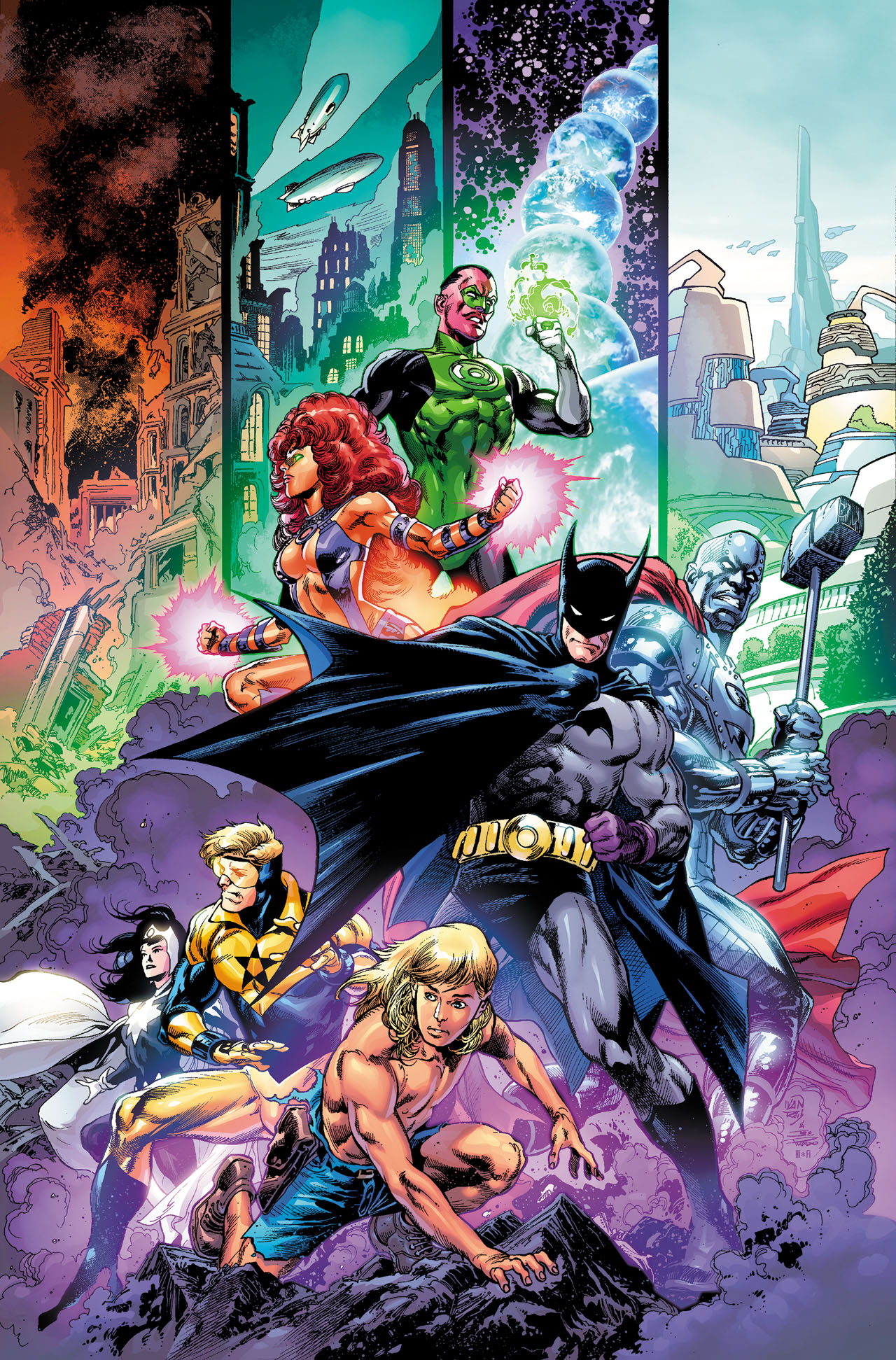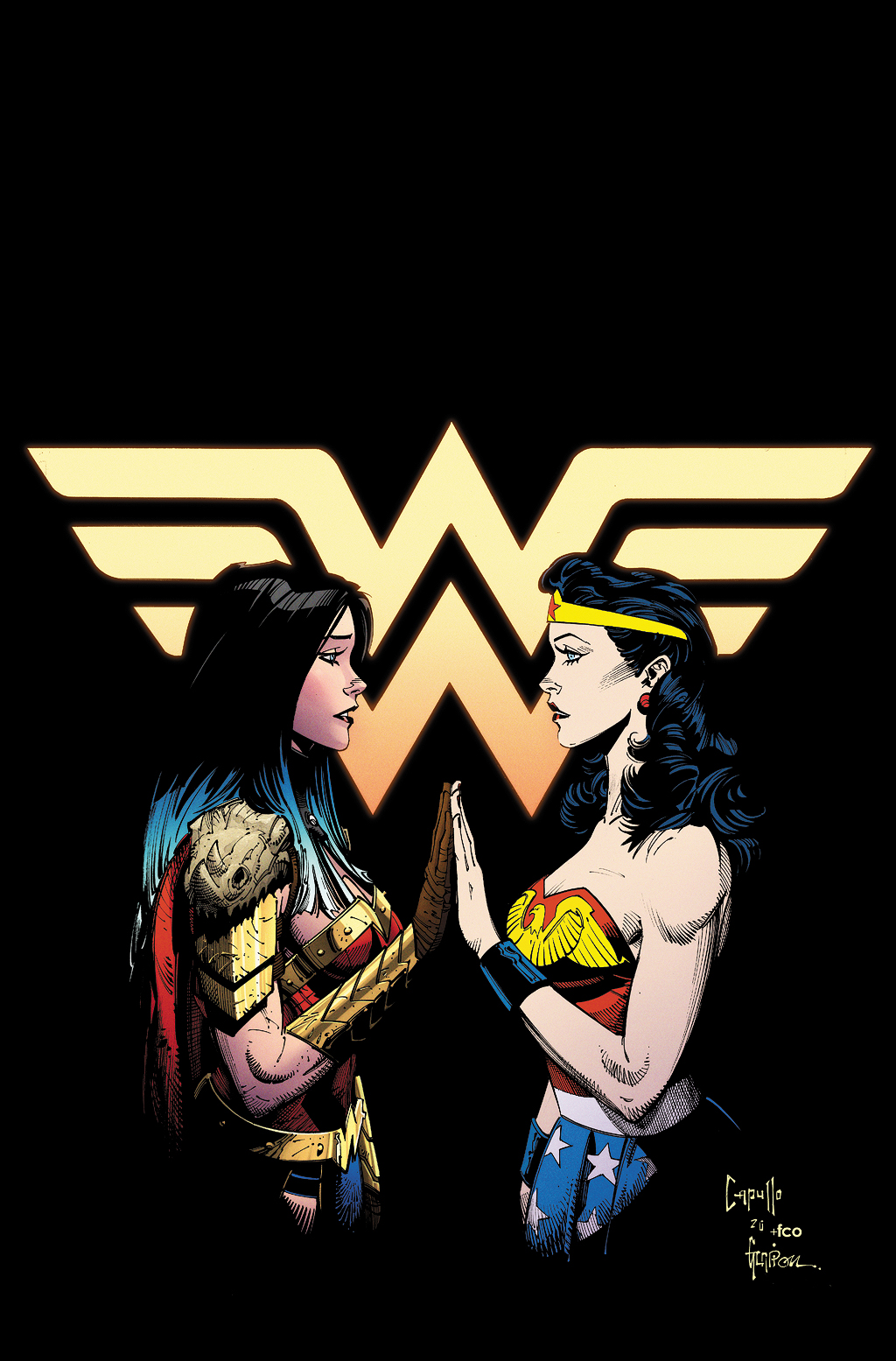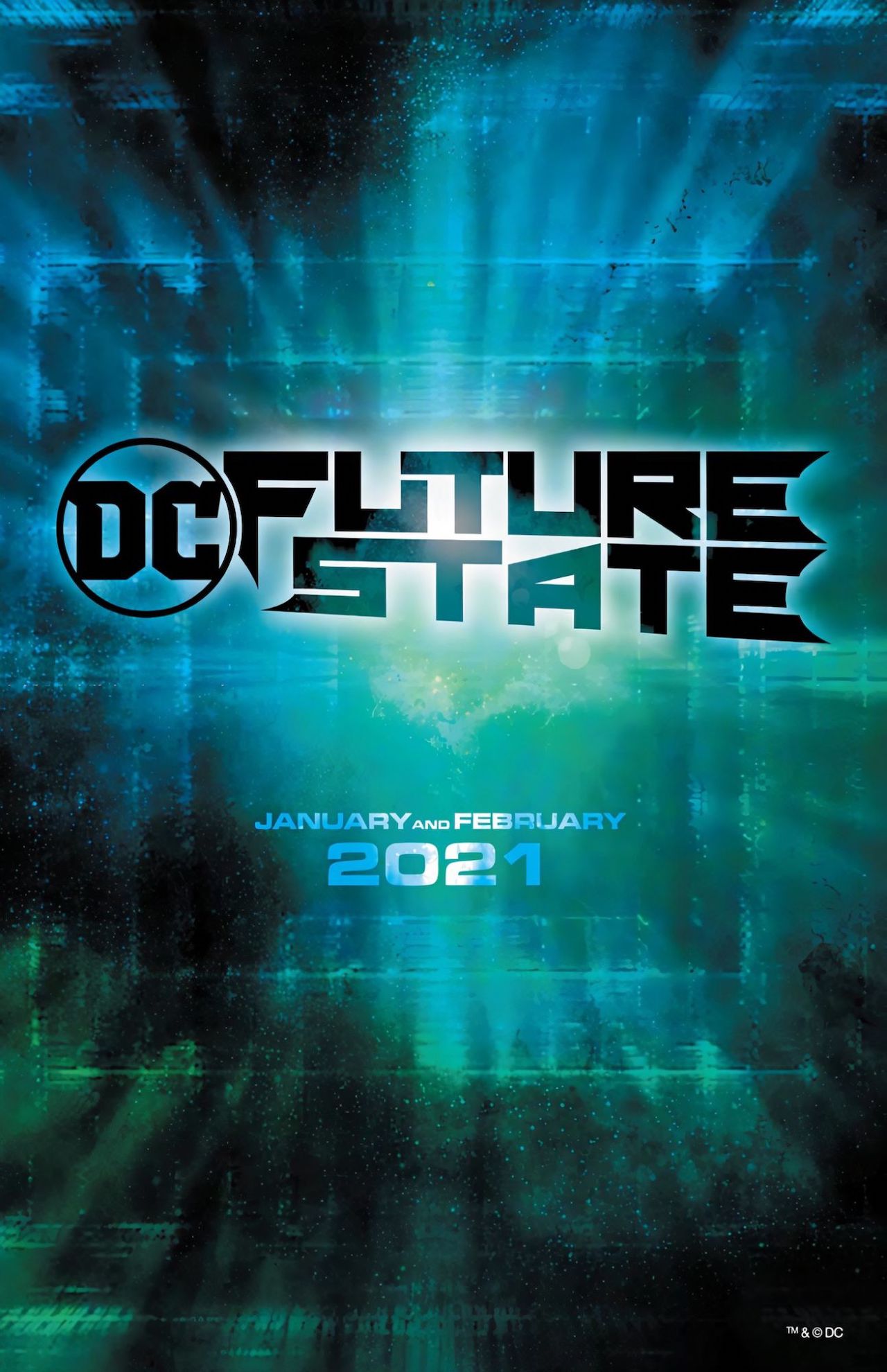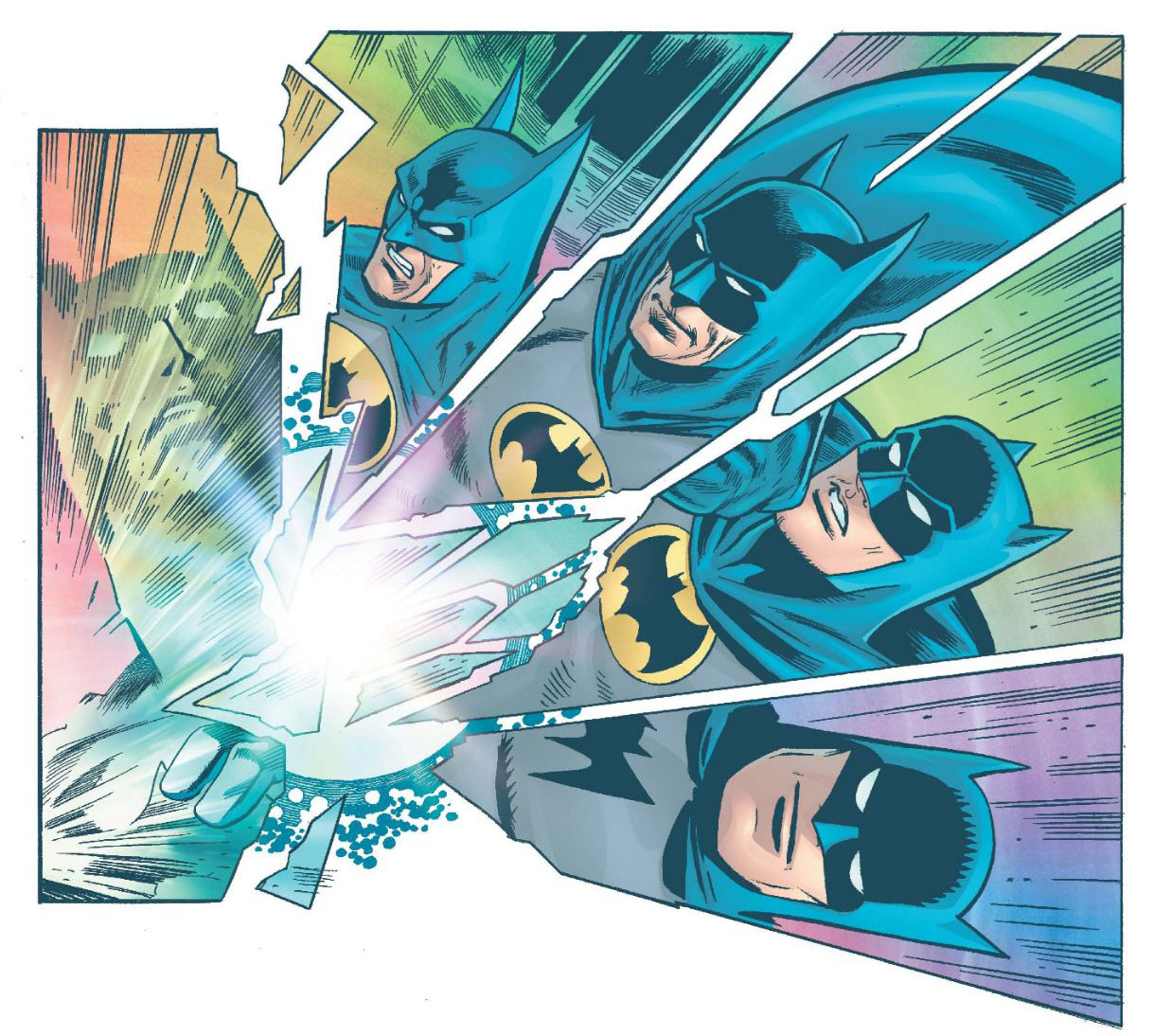Talking Generations: Shattered DC special with writer Dan Jurgens
Generations: Shattered #1 leads into Future State and will be followed by Generations: Forged in February

On Tuesday, January 5, on the same day the Dark Nights: Death Metal finale goes on sale, DC will release Generations: Shattered #1, a prestige format 80-page one-shot written by Dan Jurgens, Andy Schmidt, and Robert Venditti that continues story elements stemming directly out of Death Metal #7 and Jurgens' story in last month's Detective Comics #1027.

Starring a time-displaced team of DC superheroes including the "original" 1939 Batman, Booster Gold, Kamandi, Starfire, Dr. Light, Sinestro, and Steel, they face off against a "mysterious foe" to stave off a cosmic threat to DC's "newest (and oldest) universe".
While the publisher has yet to acknowledge or confirm it officially, Generations: Shattered #1 leads into their January and February Future State event, which as Newsarama has reported will be a finite event that will feature a series of limited series specials temporarily replacing the core DC Universe titles.
While details of Future State will have to wait until DC releases their January 2020 solicitations later this month (or before), Newsarama was able to pose some questions about Generations: Shattered to its writing trio. Jurgens provides the answers as we talk about the title's connections to the previous Generations event, their choice of characters, and what appears to be a bookend chapter to Shattered on sale in February.
Newsarama: Gentlemen, first of all, given we're all comic book fans and we all like context and continuity, we have to ask - you guys are three-fifths of the announced creative team of the Generations event that was supposed to launch on Free Comic Book Day in May and was rumored to culminate in the much-speculated-on '5G'.
Given the shared title and that it's you three guys, we're going to assume some shared DNA. So our first question is to whatever degree you can answer, what happened to that version of the Generations project and why isn't it moving forward as then-conceived?
Dan Jurgens: I don't think it's any great secret that DC was working toward some developments with its line that aren't now going to happen. There have clearly been a number of changes, not the least of which is the reality of a global pandemic, which wasn't a factor when we first started. It has actually been a very organic process with a natural evolution of ideas.
Nrama: We'll address its evolved state in a moment, for the moment what DNA strands does that former project share with this new incarnation?
Get the best comic news, insights, opinions, analysis and more!
Jurgens: The common DNA strands of the project really gets into the idea of the different generations of the DC universe. It's really amazing to consider that Superman first showed up in 1938 and has been a premier fictional character all that time. He was the first of what became an entire, magnificent universe of characters and we've seen them progress through different generational versions. From our very first discussions, the durable nature of those characters and the way they adapted through the years was a key part of what Rob, Andy, and I have been dealing with.

Nrama: Before moving onto that in more detail, how does Shattered relate to Dark Nights: Death Metal, which DC has revealed leads directly into Shattered?
Jurgens: Death Metal builds toward a very specific conclusion that allows us to tell our story. I think it's safe to say that we're all exploring the vast potential of the DC universe of characters.
Nrama: Solicited as Generations: Shattered #1, Dan your story in Detective Comics #1027 teased its continuation in Generations: Future State #1. Can you clear up any conflicts between those things and how (assuming it does), does Shattered relate to Future State in January and February?
Jurgens: Nice catch on your part! Originally, we were going to touch on what's coming with Future State. We're detouring from that a bit to focus more on our own story.
Nrama: Dan, the 'Tec story pretty much is a lead-in to what we know about Shattered #1 from the solicitation. The "original" Batman is recruited from his timeline to serve on a time-crossed team (somewhat reminiscent of Avengers Forever). The most interesting new detail not in the solicitation seems to be that despite his appearance on the covers we've seen, Kamandi twice refers to Booster as an old man.
Jurgens: Yes, Kamandi refers to Booster as an old man, but that's by design and all meant to lead to part of the overall mystery of what's happening—not to mention the idea that we can have different generations of characters.
Nrama: So then it suggests to us he's referring to a Booster not from the current main timeline or his original timeline, but from a timeline years-decades removed from the current core DC timeline.
Did we interpret that clue correctly?
Jurgens: You did!
Which means that people are (hopefully) speculating about things just as we hoped.

Nrama: Was Booster communicating from the "Future State" of the Jan-Feb event?
Jurgens: The communication that Kamandi is referring to was centered more in his own time. As for how that happens, that's a part of the story to come!
Nrama: Can you talk about why you selected the line-up of characters you selected? And can you tell us circa "when" each character was pulled from?
Jurgens: Sure!
We wanted to reflect different periods of DC publishing history.
So, Batman, who's pulled from 1939, just days after he put on the costume, obviously reflects those earliest days. Think of that as the Golden Age.
Sinestro gets into the Silver Age while Kamandi gets us into both the 70s and Great Disaster future.
Booster, Starfire, and Dr. Light come from different aspects of the 80s and Steel is from the 90s.
As for why we picked those specific characters, we thought they'd made for a very interesting mix of personalities, backgrounds, powers, and capabilities. They're also characters that intrigue us as writers so we can provide the personal spark every story has to have.
We also have such a great team of artists on board that we want to give them characters and scenarios that are both fun and interesting to draw. It's all part of elevating the project to a very special place.

Nrama: Why the "original" Batman, as opposed to say the original Superman or the original Wonder Woman, who was originally being set up as the "first superhero" in the previous version of Generations.
Jurgens: There's a raw edge to first-generation Batman that feels really interesting. He's younger, has no tech, is very much a loner and, I think, represents an attitude of desperation that goes to that time. Unlike Superman who is an alien or Wonder Woman, who comes from a very different environment, this Batman is very human. The concepts of alien beings, superpowers, and time travel are extremely foreign to him.
Nrama: Will any other time-plucked characters be part of the story?
Jurgens: Yes, one in particular, who'll play a key part in the story and, we think, serve as a very pleasant, fun surprise for readers.
Nrama: Speaking of surprises, most "mysterious" comic book foes (in solicitation terms, as Shattered #1 promises) turn out to be established characters in new guises or making surprising returns. Can you give any clues as to who your's is?
Jurgens: Sure!
He has definitely appeared before, but I think it's been a while since we've seen him.
His power level has definitely positioned him with the ability to manipulate time into something he can shatter, dominate, and shape to his own desire.
Nrama: Staring to wrap things up, from the outside looking in, DC seems to be entering into a meta-textual phase of handling its seemingly-ever present continuity conflicts. Dan, you were the writer of Zero Hour, another time-based 'crisis' and continuity-redo.
First of all, is there any direct relation between Zero Hour and Shattered?
Jurgens: Nothing that's terribly overt, other than the fact that Zero Hour is part of DC's history. Consider it a thread that's part of the overall tapestry of the DCU.
Nrama: So then is embracing and recognizing the full "tapestry," the different "generations" rather than trying to smash them together into a 10-20 year timeline the official new DC narrative approach? Particularly given Warner Bros. TV and films seem to be fully running toward rather than away from the full-on multiverse concept?
Jurgens: That's a heavy question and none of us can really answer for what's happening with TV and Film.
But as both readers and professionals, we appreciate different aspects and eras of the DC universe as a whole. It seems to us that there is a particular strength of recognizing the very best that DC has offered through the years.
Nrama: So then is generational timelines (the original Batman, the 80s New Teen Titans) the new way to view the multiverse? And trying not to lean too heavily into Dan DiDio's infamous whiteboard, is there a mechanics to what makes a 'generation' you can share with readers.
Jurgens: Our story will deal with one way that we look at the universe of characters that we're dealing with. In terms of mechanics you mean, "How does this all connect," yes, we'll address that.

Nrama: Your Detective story seems to imply there are no less than six Batmen. Is that cannon or just artistic license?
Jurgens: It'll become canon in the context of the story we're telling.
We'll address how these characters and eras actually connect through the years and eras we've seen and what that means in terms of the way these characters relate. We'll really dig into that the following month in Generations: Forged which… wait.
We aren't supposed to discuss that yet?
Sorry. Forget we said anything!
[editor's note: While DC hasn't provided any further information on February's Generations: Forged #1, as Newsarama previously speculated it's almost certainly the same size and format as Shattered and likely serves as a concluding bookend chapter to Shattered and Future State that will precede the return of the mainline DC Universe titles in March resuming their numbering along with a series of new launches.]
Check out details about Death Metal #7, Generations: Shattered #1, and the entire line-up in the DC December 2020 solicitations.
I'm not just the Newsarama founder and editor-in-chief, I'm also a reader. And that reference is just a little bit older than the beginning of my Newsarama journey. I founded what would become the comic book news site in 1996, and except for a brief sojourn at Marvel Comics as its marketing and communications manager in 2003, I've been writing about new comic book titles, creative changes, and occasionally offering my perspective on important industry events and developments for the 25 years since. Despite many changes to Newsarama, my passion for the medium of comic books and the characters makes the last quarter-century (it's crazy to see that in writing) time spent doing what I love most.


